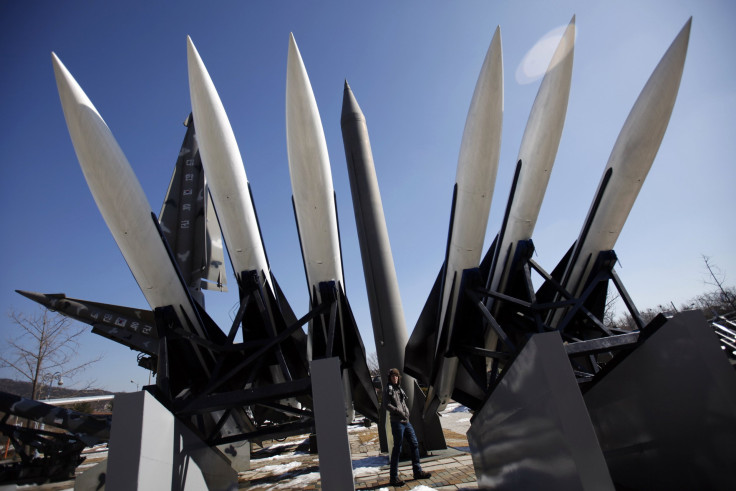North Korea Fires Two Ballistic Missiles Into The Sea

North Korea launched two ballistic missiles early Sunday into the body of water between the Korean Peninsula and the Japanese archipelago, according to multiple media reports.
The latest in a series of test-firings appears to be an expression of anger over plans made by Japan, South Korea and the U.S. to conduct joint naval exercises in the region this month. In anticipation of the exercises, the aircraft carrier USS George Washington arrived in Pusan Friday, China’s official Xinhua News Agency reported.
“The planned reckless military actions ... are another open challenge to the sincere efforts of the army and people of [North Korea] to defuse tension on the peninsula and create [a] peaceful atmosphere,” Xinhua quoted an anonymous representative of that country’s National Defense Commission as saying.
Japan’s Defense Ministry said North Korea’s most recently fired missiles were launched Sunday between 1:20 a.m. and 1:30 a.m. local time (Saturday between 12:20 p.m. and 12:30 p.m. EDT), according to Reuters. It said they flew about 310 miles before splashing into the body of water separating the two nations.
“This is a clear violation of U.N. Security Council resolutions,” Japanese Chief Cabinet Secretary Yoshihide Suga told reporters. Accordingly, he said, “The government made a protest through diplomatic channels in Beijing.” Neither casualties nor damages resulted from the test-firings, Suga said.
The missiles are believed to have been Scuds and were fired from the North Korean city of Kaesong, which is about 12 miles from the border with South Korea, according to a military official in that country who spoke to the Associated Press on condition of anonymity because of his agency’s rules.
“It is remarkable that missiles were fired from Kaesong, a symbol of North-South cooperation,” Yang Moo-jin, a professor at the University of North Korean Studies in Seoul, told AP. “Such action can mount tensions as it suggests that these missiles … can target the entire Korean Peninsula.”
North Korea regularly conducts test-firings, but there has been an unusually large number of launches this year, AP reported. South Korean officials have confirmed about 90 test-firings of missiles, artillery and rockets by North Korea since Feb. 21, the news agency said. More than 10 of them have been ballistic launches.
The Korean Peninsula has been in a state of war for more than six decades because the Korean War -- commonly dated between June 25, 1950, and July 27, 1953 -- concluded not with a peace treaty but with an armistice agreement.
© Copyright IBTimes 2025. All rights reserved.





















